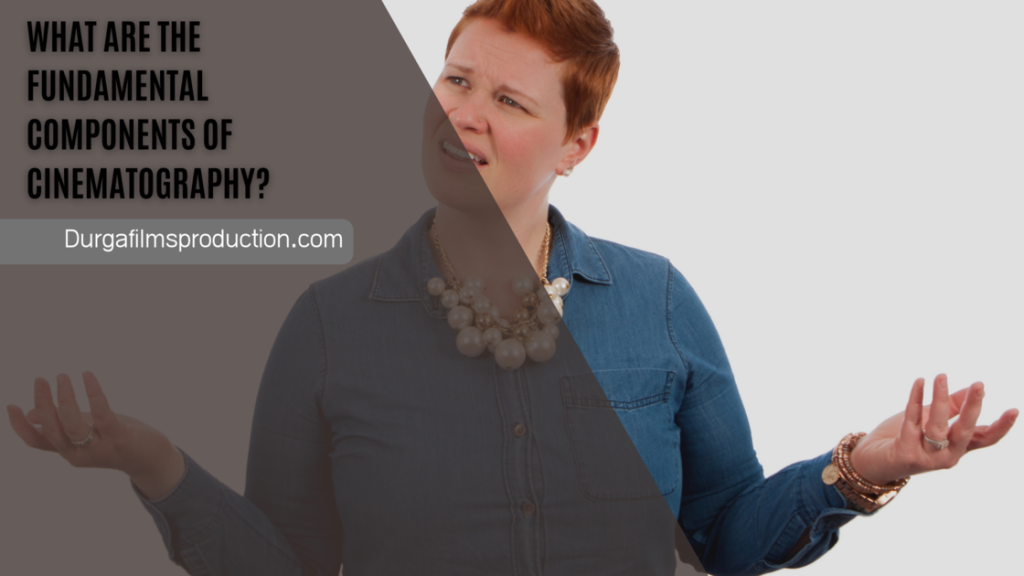Today we are going to talk about some components of cinematography. The practice of recording moving images on film or digital media is known as cinematography. It incorporates a range of methods, including scene composition, lighting, camera and lens choice, special effects, etc.
Together with directors, cinematographers create the final product. They produce a picture of the story that engages the viewer’s emotions and imagination. Cinematography’s fundamental components that constitute the basis of this art form will be examined in this essay. Anyone interested in learning more about cinematography and filmmaking must comprehend these concepts.
JUMP TO
Camera Movement

In cinematography, the term camera movement refers to the intentional movement of the camera. Physically using a dolly, virtually using a crane or Steadicam, or digitally using visual effects in post-production are all options. The mood, tone, and meaning of a photograph can all be significantly affected by how the camera is moved and placed.
The movie employs a variety of camera movement methods, such as tracking shots, panning shots, tilting shots, dolly shots, and crane shots. Each strategy affects the audience differently. Camera movement is crucial to create three-dimensional relationships between individuals and objects in a scene. It describes action and advances the plot.
Lighting
Cinematography relies heavily on lighting. Setting the tone and ambience of a scene is important. It speaks of the technique used to get the ideal look and feel in a shot. Effective lighting can significantly increase the visual impact. It can improve the shot’s depth, texture, and atmosphere. The movie uses several lighting effects. Each technique affects mood and ambiance differently. For instance, dim lighting produces a dramatic, melancholy ambiance, whereas bright lighting produces a cheery, upbeat one.
Another method creates a halo effect around the subject through backlighting. Additionally, side lighting gives depth to the photo and produces dramatic shadows. Regarding cinematography lighting, visual contrast is crucial. By meticulously balancing the brightness and darkness of various aspects of a scene, cinematographers can add visual interest to a shot. This will focus viewers’ attention on particular areas of the frame. In this manner, the use of lighting becomes a crucial storytelling tool. It aids in the transmission of narrative content, feelings, and atmosphere.
Framing
The positioning and composition of objects inside a shot is called framing. Cinematography is crucial. It controls what and how the viewer sees, which contributes to visual attraction, balance, and meaning. By highlighting the key components, ideal framing may bring a scene to life. A film may use close-ups, wide shots, or medium shots, among others. Each technique has a unique effect on how a scene’s visual elements are put together.
For instance, close-ups emphasise details and emotions by focusing on a particular subject or component. Wider pictures, on the other hand, offer context and background information. By focusing the audience’s attention on the elements of a scene that are most crucial and by establishing visual rhythms that aid the narrative, framing aids in the establishment of an overall hierarchy. Cinematographers can produce visual compositions that powerfully convey the director’s vision by carefully examining the shot’s constituent parts.
Composition
The way your shot is composed can significantly change its direction. Camera composition also affects what your viewers can and cannot see. It affects the audience’s ability to relate to your scene imagery. Modifying the composition of your camera Navigating the scenario The success of your project depends entirely on how well you capture the different iterations of your characters in the environment you are filming in.
Exposure
Camera exposure control, one of cinematography’s essential aspects, can dramatically change a scene. How the final image appears on the screen for your viewers can be significantly affected by changing the camera’s exposure. This is so that more light can come in. Remember that factors such as light, shutter speed, frame rate, ISO, and aperture affect exposure. Regardless of what you’re filming, all of these crucial components must be considered when recording footage.
Conclusion
Basic components, including lighting, composition, and camera movement, are used in cinematography. Prospective filmmakers must comprehend these concepts. By mastering these concepts, filmmakers may elevate their productions to new levels and convey their ideas in an original and captivating manner.


